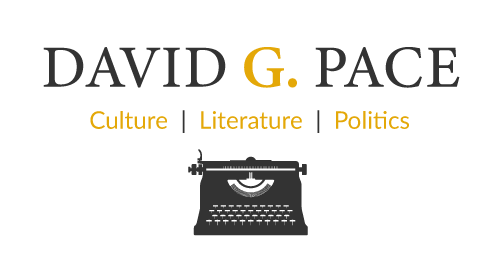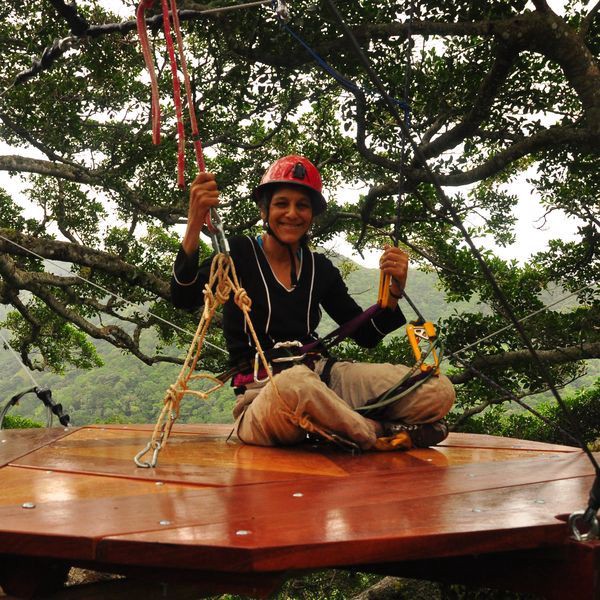It’s hard to find fault when academics and other specialists in arcane subjects such as ornithology and ecology integrate with popular culture. Why? Because scientific inquiry belongs to the people.
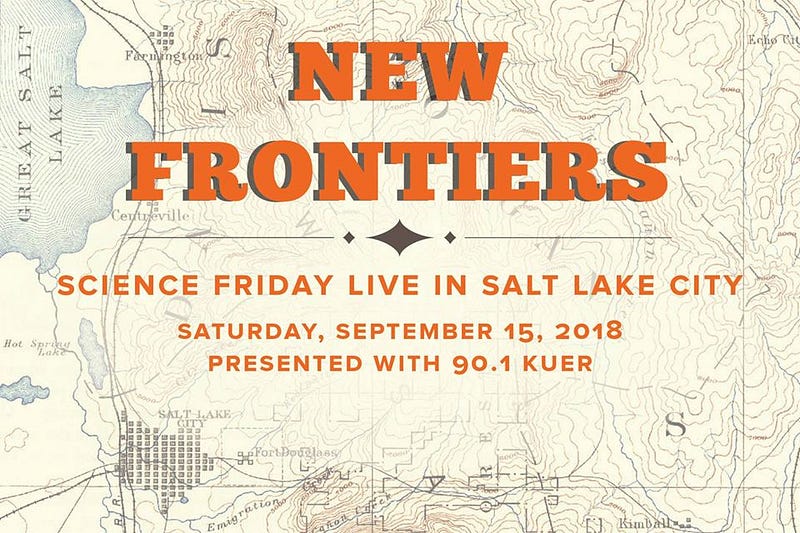
For many, the voice of WNYC’s Ira Flatow is the voice of science, much as Bill Nye the Science Guy was for years the average American child’s portal to the relevance and wonder of empirical science, and Carl Sagan was, earlier, its TV evangelist. So it was that when Flatow took the stage in Salt Lake City recently to record one of his “Science Friday” shows, it felt like a warm, familiar bath to a lot of us.
Folks have been trying to (and arguably succeeding) at making science sexy for a long time whether Jacque Cousteau and his bevy of merry oceanographers for decades last century; the late astronomer/physicist Steven Hawking, publishing what became the best-selling “A Brief History of Time”; or the fusion of nerds to jet propulsion academics in TV’s absurdly funny “The Big Bang Theory.”
Flatow and his team are admittedly more benign than Sheldon Cooper and his fictional, hopelessly lunatic science buds at Cal Tech. The Science Friday host deploys a model based on the interview of field scientists and philosophers who report in spare, but captivating detail their work. The @SciFri outing in Utah this September was vintage Flatow who positions himself as a lay scientist who asks obvious but informed questions and seeds the proceedings with quotidian humanity, and often humor.
That said, the denizens of Salt Lake City and beyond got their money’s worth September 15th, going ga-ga over a show that included two biologists, a paleontologist, and a dark sky advocate. Punctuated by the quasi-nerdy surf band Boys Ranch and a couple video segments, Flatow was in his element, and the audience in the vast Eccles Theatre downtown, including me, were lapping it up.
It’s hard to find fault when academics and other specialists in arcane subjects such as ornithology and ecology integrate with popular culture. Why? Because scientific inquiry belongs to the people. We the people fund it, especially in the US, with our tax dollars. And we have been the benefactors (as well as, admittedly, at times, the terrors) of untold applications to our daily life, from penicillin to mobile phones.
Plus, science has a perpetual cool factor that is indisputably appealing to all. It satisfies our curiosity about the universe, observable and not-so-observable, and of course about life whether it’s developmental biology or chemistry; birds or human brains; genetics or rocks. At minimum science is filled with wonder; at the maximum, with Ira Flatow musing and the Boys Ranch pounding away on stage, the buzz of live radio all around, it can even feel heroic, like The Flash kicking down doors and taking care of business or Serena Williams athletically gracing the US Open one … more … time.
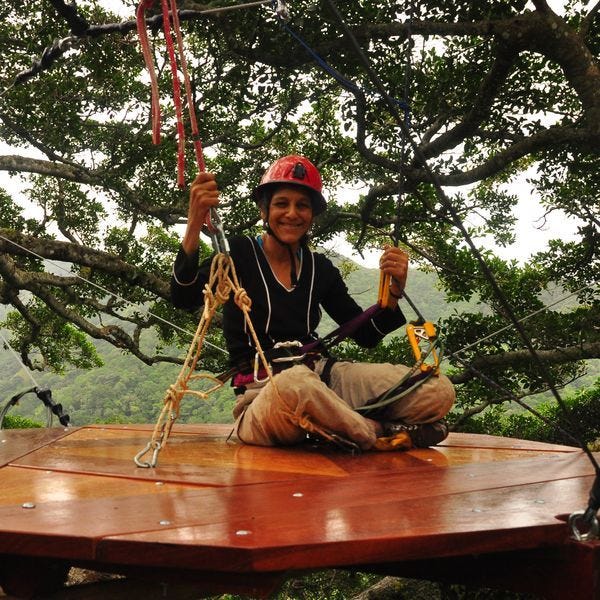
One example of the Salt Lake event was Nalini Nadkarni, Professor in the School of Biological Sciences at the University of Utah. Nadkarni has been looking up into the tree canopies of rainforests for 35 years and asking “what’s goin’ on up there?” She figured out how to use a cross-bow-styled slingshot/fishing rod to get ropes into the trees and has been sitting up there ever since in places like the forests of Costa Rica where 28,000 species of plants and animals live, if not always thrive. During many years of field study she discovered “canopy soil” 2–30 cm-deep stuff that originates in the trunks and branches and acts as a shortcut in getting nutrients to the flowering tops of dense trees. These plants collect water; they create their own little ecosystem, she reported, painting a picture with the help of slides that made the audience gasp, and then applaud.
This is a woman who you feel like you could have coffee with, then wine and then go waterskiing with later. She’s spry, animated and, most importantly, approachable. She loves her work. That is clear, especially when she describes the jacket she’s wearing of green patterned leaves, the design of which originiated from a photo of an endangered plant she’s studied and is fond of. She discovered through the jacket “the possibility of using fashion to raise consciousness for conversation.” This elicited a guffaw, of course, from Flatow, whose admitted stereotype of ecologists was suddenly challenged. “I mean I’d have to look at every industry to make sure,” he quipped, “but I think ecologists are the worst dressed.” Au contraire.
An important, perhaps essential part, of science communication is showing the application of one’s peer-reviewed research. For Nadkarni, that application starts with conserving forests that sustain life on the globe. At one point she learned that eager florist suppliers were harvesting forest moss from the Pacific Northwest old-growth forests. This is moss which takes two to three decades to grow, clearly an unsustainable business model. She then enlisted incarcerated individuals to help determine alternative mosses for floriculture workers, mosses that grow faster and because they’re “farmed,” don’t risk the depletion of rain forest ecology.
In Nadkarni’s continuing outreach to prisons and detention centers she imports plants and invites scientists to speak. Transformation of these individuals ensues. When released one prisoner went on to get his PhD and ended up a post doc researcher at the University of Nevada. “The biggest impacts,” she says of these community engagements, “is on the visiting scientists themselves.” They find their own stereotypes of the incarcerated in a country which has the highest percentage of individuals imprisoned, challenged and transformed into something new. The circle of scientific influence partly because of its enduring romance on all of us has thus gone full circle.
Is it any wonder that in science, wonders never cease?
Science Friday and other attempts at wedding science to popular culture and popular communication have detractors. Some worry that science is being trivialized, “dumbed down” and is distracting educators, research biologists, ecologists, geologists, chemists and astronomers from serious study as well as the painstaking, and unglamorous decades-long lab and field work that by design or accident continue to reveal more and more startling knowledge, not to mention applications to medicine and industry; transportation and security; communications and, yes, even fashion. Others are asking, “are we leading audiences to rely less on data than emotion? Are we somehow undermining the critical role of trust in scientifically-based work?”
Some scholars, including those in the sciences, have organized into advocacy groups like Scholar Strategy Network not only to promote their research and educational pursuits broadly but to address the unfortunate erosion of trust and value perception towards scholarship that has even taken up residence in the rhetoric of thought and policy leaders in the highest political offices of the land. According to a recent Pew Survey, less than one fifth of respondents trusted scientists in general.
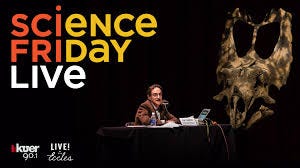 For me, and for most of the hundreds and hundreds of people who sat in the darkened auditorium of the Eccles Theatre in Salt Lake, I don’t think we imagined as we walked away with Ira Flatow’s wry, inquisitive voice thrumming through our heads and sternums that we were on the road to being the next rock star of the science world, that we even understood half of the details or implications of what we’d just heard and experienced. Instead, like so many other things in this world, we left grateful for the generosity of an authentic communicative act, a translation of a language into something that we could glimpse, wonder and marvel at, and . . . be willing to hand over some of our hard-earned tax money for the furtherance of.
For me, and for most of the hundreds and hundreds of people who sat in the darkened auditorium of the Eccles Theatre in Salt Lake, I don’t think we imagined as we walked away with Ira Flatow’s wry, inquisitive voice thrumming through our heads and sternums that we were on the road to being the next rock star of the science world, that we even understood half of the details or implications of what we’d just heard and experienced. Instead, like so many other things in this world, we left grateful for the generosity of an authentic communicative act, a translation of a language into something that we could glimpse, wonder and marvel at, and . . . be willing to hand over some of our hard-earned tax money for the furtherance of.As Alan Leshner, chief executive of American Association for the Advancement of Science (AAAS), states in the Journal of Neuroscience, “We need to move beyond a paternalistic stance. Scientists seeking to engage non-scientific audiences should know before whom they stand…You are speaking to them, not to yourself. Engagement requires warmth and it needs to be clear we respect our audience.”
And maybe a little quasi-nerdy surf band music as an accent. That’s okay too.
You can hear the episode of WNYC’s Science Friday described above for the first time tomorrow, September 21, 2018 at www.Kuer.org, the local public radio station in Salt Lake City.
#
This post originally appeared on Medium.
